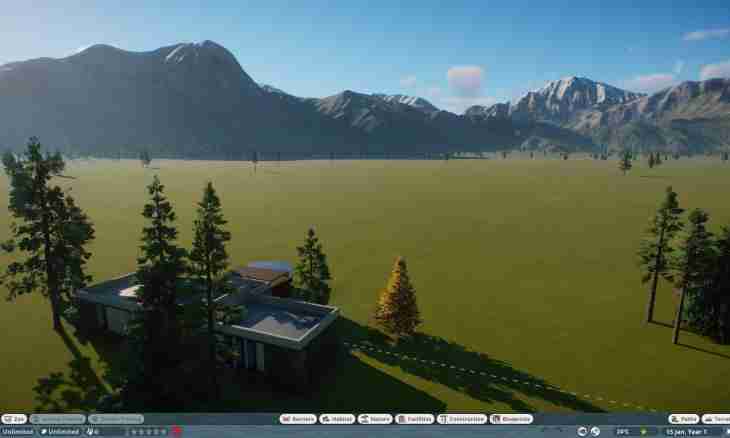The taiga occupies the largest space, in comparison with other natural zones. Being located in subarctic and moderate belts, it occupies a part of the Scandinavian Peninsula, an uneven strip lasts across the territory of Russia from Kronstadt to Vladivostok. Length of the Eurasian taiga belt exceeds 10,000 km. In East hemisphere the taiga possesses a part of territories of Canada and the USA. So considerable extent and a geographical location cause existence of various weather conditions in a zone.
Taiga zone of Eurasia
Generally the climate of a taiga can be characterized as continental. In the winter and cold air of the Arctic gets into off-season rather far to the South and causes sharp fall of temperature. The European part of a zone is exposed to the cyclonic influence of Atlantic increasing during the summer period therefore also climate here softer. Level of summer temperatures changes from +10 °C in northern areas up to +20 °C in southern.
Average temperature of the European part of a taiga during the winter period is-10 … -16 °C, height of snow cover – 50-60 cm, bedding duration - from 100-120 to 180 days. In east – Yakut, parts of the taiga region are usual winter temperatures about-35 … -45 °C. Duration of bedding of snow cover in Northeast areas and in the north of Middle Siberia is 200-240 days, its power – 90-100 cm. The climate of the Central Siberia can be characterized as sharply continental, and in the Far East - as monsoonal. In general, summer temperatures are more important for the taiga woods.
The maximum quantity of precipitation everywhere falls on July and August. In the European taiga zone their annual level is 600-700 mm, In the Central Siberia – 350-400 mm, in the Far East region – 600-900 mm. The quantity of the dropping-out precipitation exceeds evaporation level. Thus, throughout a taiga zone the sufficient and excess moistening which promotes bogging of the area, abundance of a surface water and the washing nature of soils takes place. Here many large flat rivers of the country – Volga, Kama, Northern Dvina, Vyatka, Onega, Substone and Lower Tungus, Yenisei, Ob, Lena, etc. originate, and a significant amount of lakes and swamps is concentrated. Different types of forest soils – podsolic, marsh and podsolic, taiga merzlotnye are characteristic of a taiga zone. The prevailing type of vegetation are light-coniferous and dark-coniferous forests. In the western region the main forest forming breed is the European fir-tree. Beyond the Urals, in forests of Siberia, the Siberian fir-tree, a fir, a larch and the most valuable tree of a dark-coniferous taiga - the Siberian cedar will thaw. East of Yenisei the dominating breed is the larch daursky. The taiga of the Seaside region and basin of Amur is characterized by wider specific structure. Throughout a taiga zone, generally on sandy soils, pine forests are widespread. In places deciduous breeds – an alder, an aspen, a birch join coniferous. The fauna of a taiga zone is non-uniform. The specific list of the animals living in the European part is more considerable, than in the Siberian region. The elk, a brown bear, a glutton, a lynx, a squirrel, an alpine hare, a wood-grouse, a hazel grouse, a black grouse, etc. live in the western regions of a taiga. To the east of Yenisei the sable, a stone wood-grouse, a musk deer, a hazel grouse, etc., being typically Siberian types appear. On the rivers and lakes of Western Siberia many waterfowl live.
Taiga zone of America
The Eurasian taiga woods proceed in North America in territories of Canada and the USA. Climate of the American taiga which was not testing in the past of freezing, softer than in Eurasia. Especially it is noticeable on the Pacific coast. In North America 40 species of fir-trees, 30 species of firs, 80 species of pines grow. For the American taiga woods of character a considerable share of deciduous breeds of trees. East and northern regions of the American taiga remind the Eurasian coniferous forests. Especially widely here the Canadian and black fir-tree and the American larch are presented. From small-leaved breeds of trees the American aspen, a paper birch, various breeds of an alder and willow grow here. Besides, the balsam fir and Banks's pines, and from purely American breeds – the Canadian hemlock and east thuja meet here. The taiga of the western region of North America is similar to the Far East forests. In forests of Alaska the larch prevails. The Alaskan and American larches are similar to daursky, growing in Siberia. The fauna of the American taiga, in general, is similar to the Eurasian taiga fauna.

